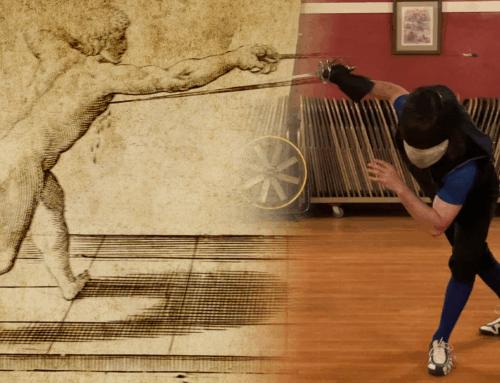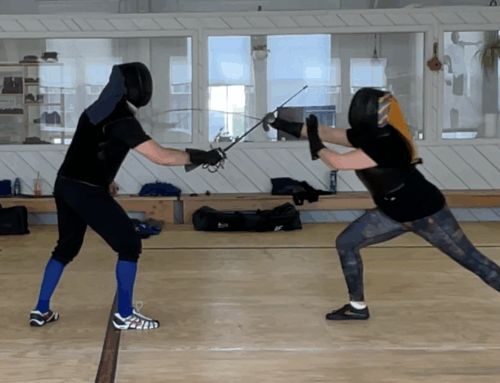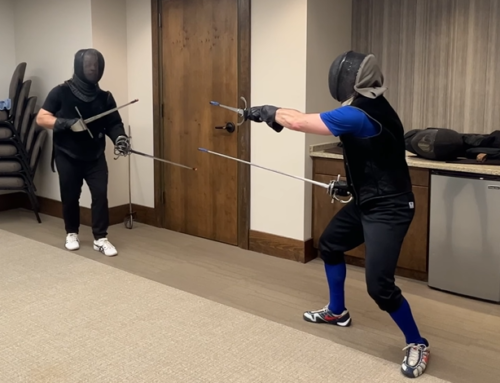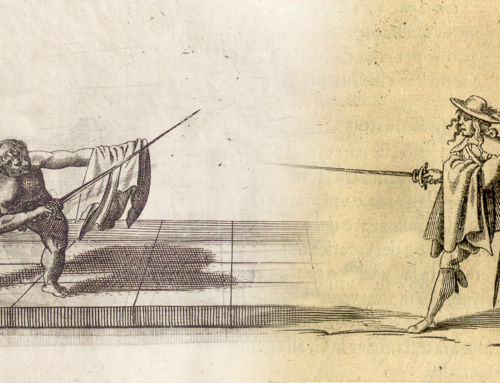Today we’ll be looking at the plays in Plate 11 of La Scherma by Francesco Ferdiando Alfieri. You can snag a copy over on Amazon if you want to follow along.
You can also find the rest of my Alfieri & other historical rapier research over in the Historical Fencing section.
In this chapter, Alfieri goes over why it’s super dumb to attack someone’s legs, doubly so by a cut as a first intention. This is a pretty universal thought in the Italian school of rapier.
Intro
He starts off by referring to an early chapter in which he explained that by rotating the hand so it forms a circle the extremities are always the most distant point.
He also mentions that defending yourself by voiding the body and striking in the same tempo is “immensely advantageous.”
He further goes on by saying that one should follow the rule to feint a cut if you wish to wound by cutting, and feint the point to wound by the point. His reasoning is that to feint one and then to wound another takes a long time and puts one at grave risk.
The Plays
Gentleman 20 is in range and in terza. From here he can throw a mandritto (cut from R to L) in three ways:
#1. Feint to the outside of Gentleman 21 and, not getting obedience, cut to the lead leg.
A riverso would be the quicker action here since the sword is already on the outside line. It could be that Alfieri suggests the mandritto as you would need a small moulinet in the middle of the movement, providing a little head coverage. Unfortunately, Alfieri doesn’t explain his reasoning.
It’s possible that riverso is the option Alfieri wants, since mandritto & riverso are both mentioned in the title.
#2. By “disordering his enemy’s blade and not arriving with the point”, throwing a cut.
Here Gentleman 20 isn’t feinting but is actually trying to land with a thrust. I interpret “disordering of the blade” as Gentleman 21 parrying the blow. From here, Gentleman 20 again can throw a cut. The riverso would be quicker option.
#3. Lastly, Gentleman 20 can feint a cut in riverso but then throw a mandritto.
Alfieri doesn’t mention where the riverso should be aimed. My assumption would be high on the outside line.
The Counter
In Chapter IX, Alfieri explains why it’s a bad idea to throw a cut while in measure.
In this chapter, he gives other options to counter. In each instance, Gentleman 21 can withdraw his lead foot, bend at the waist, and can extend his arm to strike a counter blow in a few ways:
#1. A blow to the chest
#2. A cut to the head via mandritto along Line A
#3. A cut to the wrist via riverso along Line B
In practice, this isn’t so cut & dry. If Gentleman 20 is taller than Gentleman 21, it still may be hard for 21 to land a countershot. Being a short but mobile fencer myself, I run into this quite a lot. If both fencers are of equal height and reach, it works just fine.








